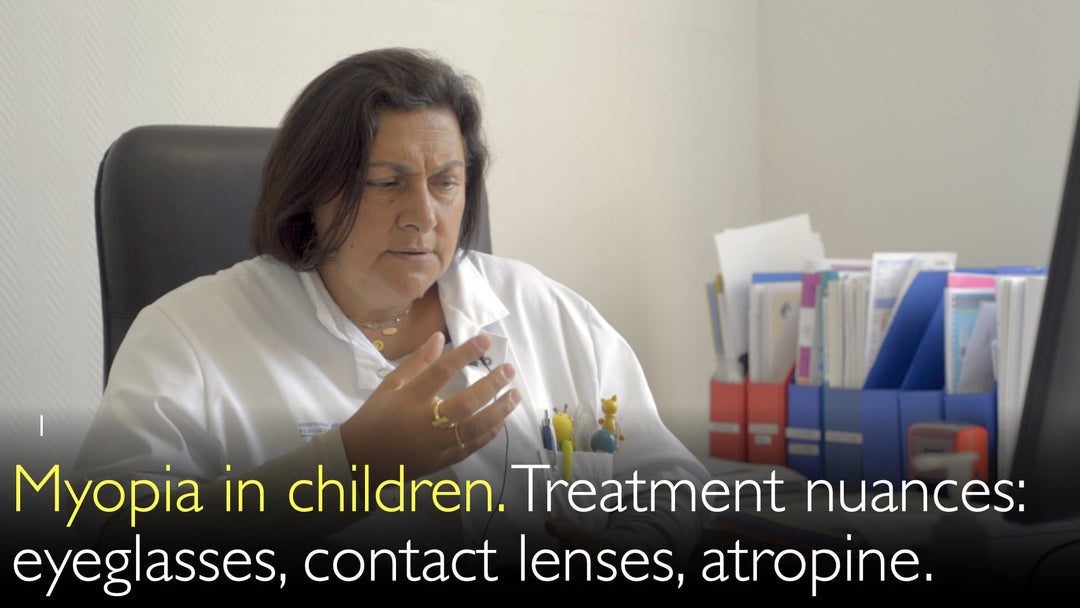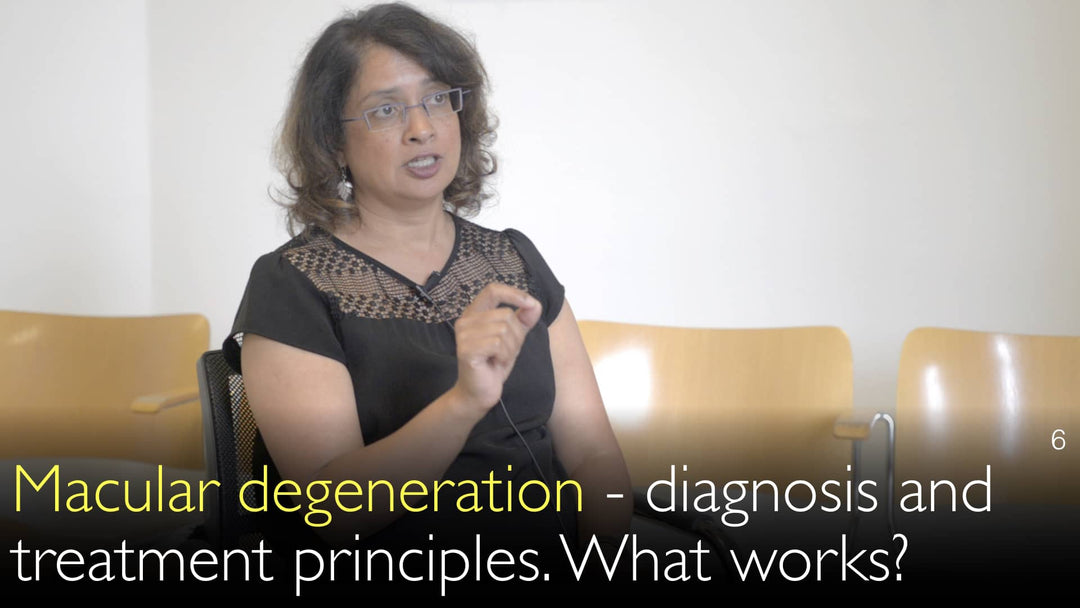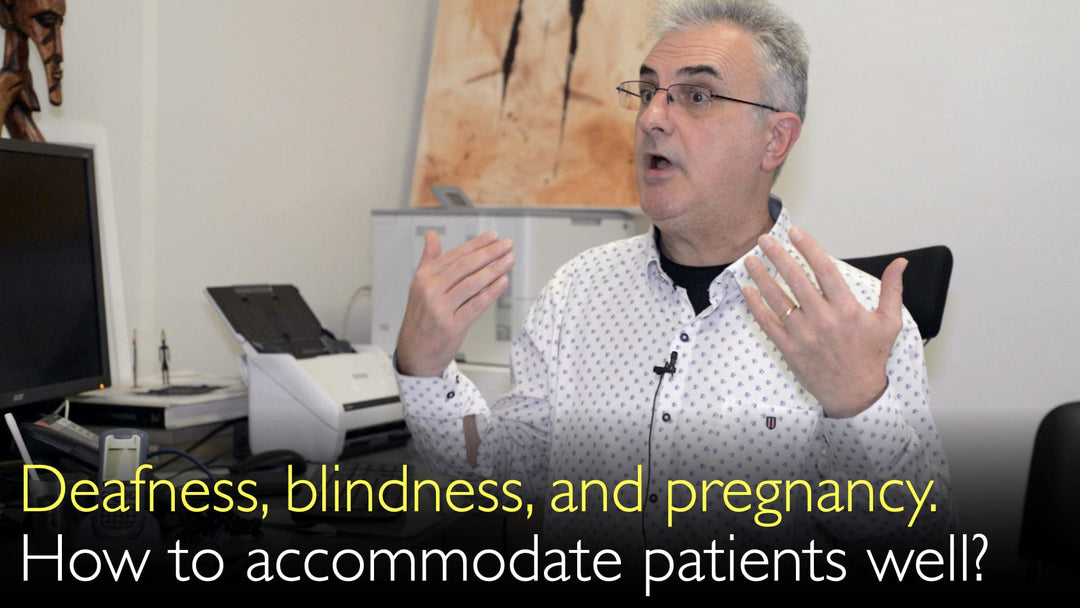Leading expert in pediatric ophthalmology, Dr. Dominique Bremond-Gignac, MD, explains modern strategies to diagnose and treat childhood myopia, highlighting innovative solutions like specialized glasses, contact lenses, orthokeratology, and low-dose atropine that can slow progression by up to 60% while preventing serious vision complications.
Childhood Myopia Treatment: Advanced Options to Slow Progression and Protect Vision
Jump To Section
- The Rising Myopia Epidemic in Children
- Specialized Glasses That Slow Myopia Progression
- Daily and Overnight Contact Lens Options
- Low-Dose Atropine Eye Drops for Myopia Control
- Managing High-Risk Myopia Cases
- Personalized Treatment Plans for Children
- Full Transcript
The Rising Myopia Epidemic in Children
Dr. Dominique Bremond-Gignac, MD, warns that childhood myopia has reached pandemic levels, with projections showing 50% of the global population will be nearsighted by 2050. Currently, 20% of children under six already experience vision problems including myopia, strabismus (crossed eyes), and amblyopia (lazy eye). Left untreated, childhood myopia significantly increases risks for retinal detachment, early cataracts, and glaucoma later in life.
Specialized Glasses That Slow Myopia Progression
Dr. Dominique Bremond-Gignac, MD, highlights two breakthrough eyeglass technologies proven to slow childhood myopia. MyoSmart glasses by HOYA Corporation demonstrate a 60% reduction in myopia progression based on three years of clinical studies. Essilor Stellest lenses offer another effective optical solution, though with slightly less long-term data available. While costs may be higher than standard glasses, these specialized lenses provide significant protection against worsening vision.
Daily and Overnight Contact Lens Options
For children who prefer contact lenses, Dr. Dominique Bremond-Gignac, MD, explains two effective approaches. CooperVision MiSight daily wear soft contacts use a specialized optical design to slow myopia progression similar to corrective glasses. Orthokeratology (ortho-k) involves wearing rigid gas permeable lenses overnight to temporarily reshape the cornea, providing clear daytime vision without correction while also controlling myopia advancement.
Low-Dose Atropine Eye Drops for Myopia Control
Dr. Dominique Bremond-Gignac, MD, emphasizes low-dose atropine as one of the most studied myopia treatments, with extensive research supporting its effectiveness. The standard 0.01% concentration works well for most children, while faster-progressing cases may benefit from 0.05% atropine. This simple daily drop regimen offers an excellent option for children who struggle with glasses or contacts.
Managing High-Risk Myopia Cases
For children with rapidly progressing or high-grade myopia, Dr. Bremond-Gignac stresses the importance of screening for underlying conditions like Stickler syndrome. These cases require specialized monitoring and may benefit from combination therapies or surgical interventions to prevent serious complications like retinal detachment. Early identification of high-risk patients allows for more aggressive treatment approaches.
Personalized Treatment Plans for Children
Dr. Dominique Bremond-Gignac, MD, notes that optimal myopia management requires customized solutions based on each child's needs, lifestyle, and family preferences. Ophthalmologists may combine multiple therapies (like glasses with atropine) for maximum effect in severe cases. With multiple proven options now available, doctors can work with families to create treatment plans that fit seamlessly into children's daily routines while protecting their long-term vision health.
Full Transcript
Dr. Anton Titov, MD: Nearsightedness, myopia in children is a huge and growing problem. In children under six years of age, 20% have vision problems, myopia, strabismus, and amblyopia. Nearsightedness in children increases risks for retinal detachment, early cataracts, and glaucoma. You are the foremost expert in pediatric eye diseases.
Dr. Anton Titov, MD: What are the modern methods to diagnose myopia in children early? What are modern treatment methods for common vision problems in children, including nearsightedness, strabismus, and amblyopia?
Dr. Dominique Bremond-Gignac, MD: You point out a very interesting problem. This is a real problem of myopia in children during the pandemic. The prediction is that 50% of the population will be myopic by 2050. So this is tomorrow. We must take real actions to stop this pandemic problem. We have to stop myopia evolution.
Dr. Dominique Bremond-Gignac, MD: Today we have innovations for these problems. First, we have corrective solutions with specific glasses. For specific glasses, there are two systems on the market. One is particularly interesting because there are three years of studies with MyoSmart from HOYA Corporation. These glasses work for every child. The only point is the cost, but it works. MyoSmart has decreased the evolution of myopia by 60%, which is very interesting.
Dr. Dominique Bremond-Gignac, MD: There is another glass solution for myopia on the market. It was published only one year ago: Essilor Stellest lenses. It is also an interesting concept of eyeglasses. This is the first easy system we can adapt.
Dr. Dominique Bremond-Gignac, MD: The second myopia correction method is contact lenses. There is a contact lens with the focus system, exactly like eyeglasses. CooperVision MiSight contact lenses also decrease the evolution of myopia.
Dr. Dominique Bremond-Gignac, MD: The third possibility is Orthokeratology. It is not new. We use semi-rigid contact lenses during the night. Semi-rigid contact lenses change the form of the cornea. During the day, the child wears no correction system. Orthokeratology reshapes the cornea, giving these children a defocus.
Dr. Dominique Bremond-Gignac, MD: Lastly, there is atropine. It's just one drop every day of low-dose atropine. This is also a very efficient treatment for myopia. It is probably the largest cohort of children that have been studied. There is atropine 0.01%, but also 0.05% concentration for really fast-developing myopia.
Dr. Dominique Bremond-Gignac, MD: All these systems are tailored for the child. It depends on the parents, the child, everyday practice and life. The ophthalmologist can adopt one of these myopia correction systems. Doctors may also combine therapy methods for really high-grade myopia.
Dr. Dominique Bremond-Gignac, MD: We must also know therapy for high-grade myopia in children. For them, we must be very aware of problems with syndromes like Stickler syndrome. It must be identified because, for these children, we can have specific therapy or surgery to avoid retinal detachment.
Dr. Dominique Bremond-Gignac, MD: All these concepts are really interesting innovative therapy methods for myopia. We need to continue this innovation to improve the quality of life for children with myopia.







